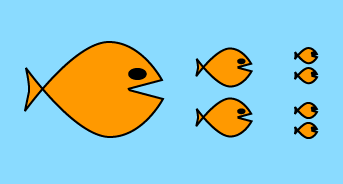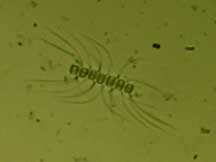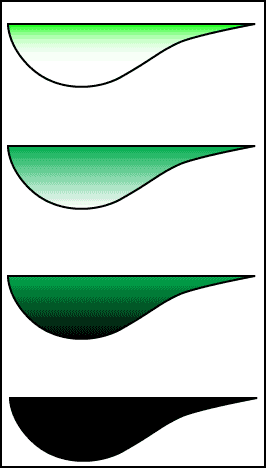| Most bio-webs change over time, if for no other reason than the annual seasons constitute changes in sunlight, temperature, and rainfall. However, dramatic changes in bio-webs can also be the results of human activities. There are literally thousands of documented cases, but here is a frequent scenario.
A lake has plants concentrated at the surface where the light intensity is highest. The concentration of plants is limited by the concentration of phosphate. The plants release oxygen into the water which supports a large collection of animals and bacteria.
Phosphates are added to the lake by human activities. It could be fertilizer runoff or sewage effluent.
At first the density of plants increases, but plants become so concentrated that sunlight is blocked for the plants toward the bottom. These plants then start to die and provide food for bacteria that consume oxygen. The oxygen concentration falls (there are no living plants to produce oxygen) and then animals also die. The dead animals provide food for bacterial that consume the little remaining oxygen.
Eventually the only organisms alive are anaerobic bacteria, which do not require oxygen (black). These bacterial produce hydrogen sulfide, the gas also produced by rotting eggs.
One might be tempted to call this a sick lake. This would be anthropocentric; the lake just contains a different spectrum of living organisms. However, humans would find it unpleasant, and the total mass of living organisms is lower, thus the "sick lake" label.
|











